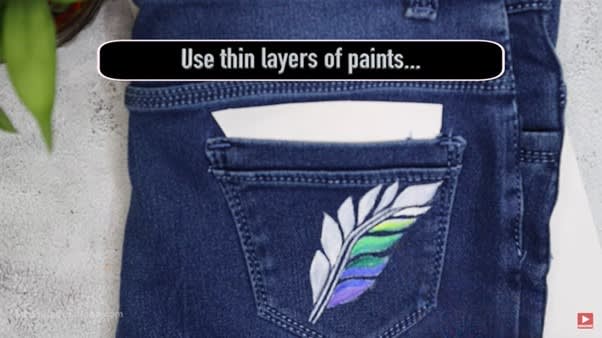Discover the art of palette knife painting with our comprehensive guide for beginners. Learn essential techniques and create stunning textured artwork!
Can ACRYLIC Paint Be Used on Fabric
Can ACRYLIC Paint Be Used on Fabric
Acrylic painting enthusiasts often wonder about the compatibility of acrylic paints with different types of fabric. In today's detailed exploration, we delve into this question without using any fabric mediums, focusing solely on the direct application of acrylic paints on various fabrics.
Introduction
Introduction
Acrylic paints are known for their versatility and vibrant colors, making them a popular choice for artists across different mediums. When it comes to fabric, however, there are unique considerations due to the varying textures and absorbencies of different types of cloth.
Testing Different Fabrics
Testing Different Fabrics
To determine how well acrylic paints adhere to fabric, we tested several types:
Crepe Cloth: Light and slightly thicker than silk, making it easier to paint with minimal bleeding.
Cotton Cloth: Offers a bit more texture, allowing for detailed designs and color blending.
Silk Cloth: Very delicate and prone to more bleeding, requiring careful application techniques.
Bunan Cloth (T-shirt material): Stretchy and commonly used in casual wear, which poses challenges due to its absorbency and stretch.

Painting Techniques and Tips
Painting Techniques and Tips
When painting directly on fabric:
Preparation: Use a thick cardboard or cardstock underneath to prevent paint from seeping through and to maintain a smooth painting surface.
Paint Application: Apply acrylic paints directly from the bottle with a touch of water for thinner consistency. Thin layers are recommended to avoid stiffness and cracking of the fabric after drying.
Layering: For darker fabrics like jeans, starting with a white undercoat helps maintain color vibrancy and prevents excessive sinking of the paint.

Challenges and Considerations
Challenges and Considerations
Painting on fabric differs significantly from canvas due to the fabric's porous nature and varied textures. Understanding these characteristics is crucial for achieving desired results:
Absorbency: Fabrics like silk absorb more paint, requiring adjustments in application techniques.
Thickness: Thicker fabrics like denim require more effort to spread the paint evenly and may necessitate additional drying time between layers.

Conclusion
Conclusion
While acrylic paints can indeed be used on fabric without the need for mediums, mastering the techniques specific to each fabric type is essential for successful outcomes. In Part 2 of this series, we will explore how to set the painted fabrics for washing durability and discuss other fabric types suitable for acrylic painting. For more insights and tips on acrylic painting on fabric, stay tuned and subscribe to our channel. Your feedback and questions are welcome in the comments below. Happy painting!
Leave a Comment 👋
Leave a Comment 👋

PALETTE KNIVES - Your ULTIMATE Guide!
Unlock your creativity with our ultimate guide to palette knives! Discover techniques, types, and tips to enhance your painting skills.

ACRYLIC Painting - Top 3 Key Strategies to IMPROVE your paintings
ACRYLIC Painting - Top 3 Key Strategies to IMPROVE your paintings

